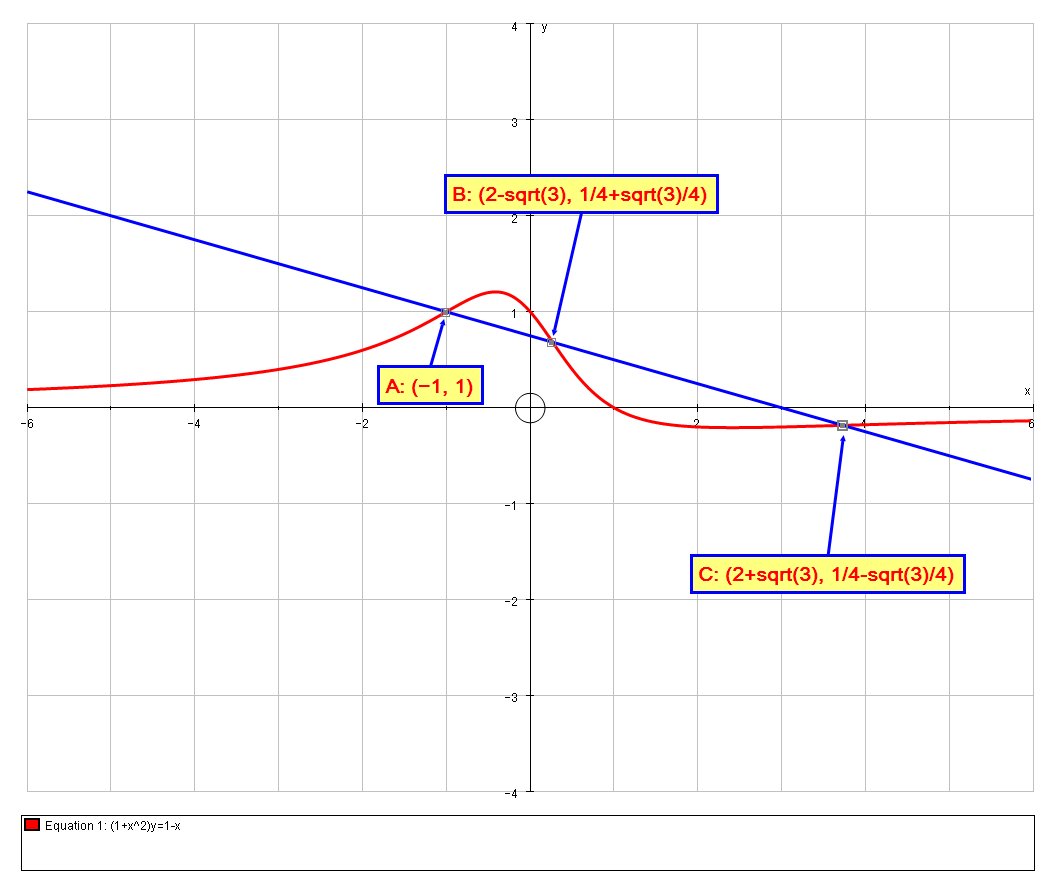Question #a1371
1 Answer
We have:
# (1+x^2)y=1-x => y = (1-x)/(1+x^2) #
Differentiating wrt
# dy/dx = ( (1+x^2)(-1) -(1-x)(2x) ) /(1+x^2)^2 #
# \ \ \ \ \ \ = ( (-1-x^2) -(2x-2x^2 ) ) /(1+x^2)^2 #
# \ \ \ \ \ \ = ( x^2-2x-1 ) /(1+x^2)^2 #
Differentiating a second time:
# (d^2y)/(dx^2) = ( (1+x^2)^2(2x-2) - (x^2-2x-1)(2(1+x^2)(2x)) ) /(1+x^2)^4 #
# \ \ \ \ \ \ \ \ = ( (1+x^2)(2x-2) - 4x(x^2-2x-1)) /(1+x^2)^3 #
At a point of inflection the second derivative vanishes, so we require that
# (1+x^2)(x-1) - 2x(x^2-2x-1) = 0 #
# x+x^3-1-x^2-2x^3+4x^2+2x = 0 #
# x^3-3x^2-3x+1 = 0 #
By Observation
# (x+1)(x^2-4x+1) = 0#
So we have:
# x = -1 #
# x^2-4x+1 = 0 => (x-2)^2-3 =0 => x=2+-sqrt(3) #
We can calculate the
# A=(-1,1) #
# B=(2-sqrt(3), 1/4+sqrt(3)/4) #
# C=(2+sqrt(3), 1/4-sqrt(3)/4) #
The equation of
# y - (1/4+sqrt(3)/4) = (1/4+sqrt(3)/4 - 1)/(2-sqrt(3)+1)(x-(2-sqrt(3))) #
# :. y=3/4-x/4 #
And with
# y=3/4-(2+sqrt(3))/4 #
# \ \ =3/4-1/2-sqrt(3)/4 #
# \ \ =3/4-1/2-sqrt(3)/4 #
# \ \ =1/4-sqrt(3)/4 #
So,
Hence, there are


